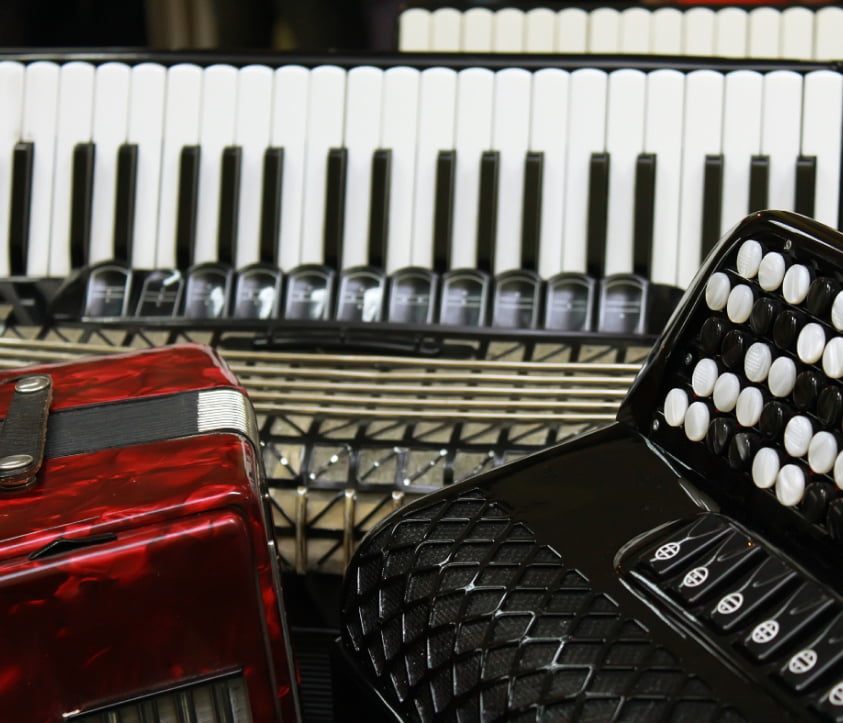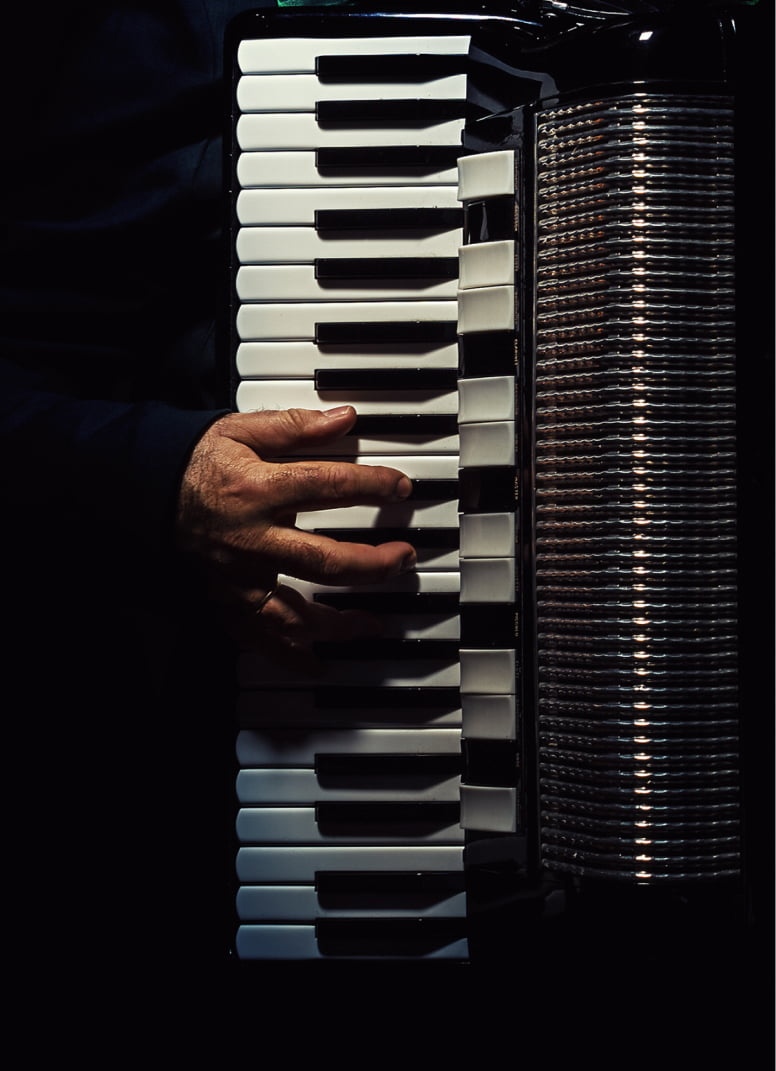 |
MAIN DIFFERENCE BETWEEN BUTTON AND PIANO ACCORDIONSAs you embark on your journey to choose the perfect accordion, the decision between the button accordion and the piano accordion becomes pivotal. This choice not only shapes your musical path but also influences the kind of melodies you'll create and the genres you'll explore. Let's delve deeper into the factors that can guide your decision-making process and help you find the accordion that resonates with your musical identity. |
Musical Aspirations
The first step in choosing between the button accordion and the piano accordion is understanding your musical aspirations. Consider the genres that tug at your heartstrings and the styles you yearn to master. If you find yourself drawn to folk music traditions, where lively dance tunes and rustic melodies reign supreme, the button accordion may align more closely with your musical vision. Its limited keys and characteristic sound become assets in these contexts, allowing you to connect with age-old traditions.
However, if your musical interests span a wider spectrum, encompassing classical compositions, jazz improvisations, or contemporary hits, the piano accordion's versatility shines. Its chromatic keyboard and expansive tonal range open doors to exploring diverse musical genres and experimenting with harmonies that stretch across the entire chromatic spectrum.
Technical Proficiency
An essential factor to consider is your current level of technical proficiency and your willingness to learn new techniques. The button accordion's layout demands a unique approach to playing, involving a deep understanding of the instrument's key arrangements and the art of producing melodies and harmonies within its constraints. If you're excited to embrace this challenge and immerse yourself in traditional folk styles, the button accordion may be the right fit for you.
On the other hand, if you're already acquainted with piano-style keyboards or have a background in playing other keyboard instruments, the transition to the piano accordion might be smoother. While mastering the complexities of both the piano keys and the left-hand buttons requires dedication, familiarity with piano-like layouts could be advantageous.
Genre Suitability
The genres you envision performing play a significant role in determining the accordion type that suits you best. The button accordion's timbre resonates beautifully in genres like Irish, Cajun, and French folk music. If you dream of capturing the essence of these traditions and breathing life into time-honored melodies, the button accordion's unique sound and limited keys might be the perfect canvas for your musical expression.
On the flip side, if your musical ambitions involve creating your own interpretations, experimenting with harmonies, and seamlessly transitioning between various keys, the piano accordion's expanded tonal palette and chromatic keyboard provide the tools you need to achieve your goals.
Artistic Identity
Your accordion choice also reflects your artistic identity and the stories you wish to tell through your music. The button accordion's authenticity and rustic charm align well with expressions of cultural heritage and traditional narratives. Its characteristic sound can evoke imagery of village celebrations, storytelling, and historical connections.
Conversely, the piano accordion's versatility extends the boundaries of artistic expression, inviting you to compose original pieces, explore innovative arrangements, and collaborate across genres. If you're eager to create music that traverses cultural and temporal boundaries, the piano accordion's adaptability offers a captivating platform.
Origins and Evolution
The journey of the button accordion and piano accordion began in different corners of the world, each shaped by distinct cultural influences. The button accordion, often referred to as the diatonic accordion, has deep roots in European folk music traditions. It found its place in Celtic, French, and other regional genres, where its compact size and limited key options played a crucial role in shaping the distinctive folk sound. On the other hand, the piano accordion, with its chromatic keyboard and broader tonal range, emerged as a versatile contender capable of bridging classical compositions, jazz harmonies, and popular music.
Keyboard Layout and Technique
One of the most significant differences between these two accordions lies in their keyboard layout and the technique required to play them. The button accordion's keyboard comprises rows of buttons on both the right and left sides. This design limits the notes available, usually to a specific key and its related modes. The challenge of the button accordion lies in mastering the art of playing melodies and harmonies using this constrained layout.
In contrast, the piano accordion features a keyboard layout similar to that of a traditional piano on the right-hand side, coupled with bass and chord buttons on the left-hand side. This design allows players to access a complete chromatic scale, enabling intricate melodies and harmonies across various keys. While it provides greater musical versatility, mastering the piano accordion demands dexterity in both hands to navigate the piano-style keys and accompanying buttons simultaneously.
Tonal Palette
Another distinctive feature is the tonal palette each accordion type offers. Button accordions are known for their distinctive timbre, characterized by a bright, punchy sound that is well-suited for lively dance tunes and energetic folk melodies. The limited number of notes contributes to a unique texture that captures the essence of traditional music genres.
Conversely, the piano accordion's tonal quality is often described as mellower and more rounded. The ability to access a full chromatic scale and the presence of multiple reeds per note grant the piano accordion a richer sound with greater harmonic complexity. This versatility allows the piano accordion to seamlessly transition between genres, from classical compositions to ballads and contemporary hits.
Musical Context and Genre SuitabilityThe choice between button accordion and piano accordion often depends on the musical context and the genre one wishes to explore. Button accordions excel in preserving and conveying the authenticity of folk music. Their characteristic sound is celebrated in genres like Irish folk music, Cajun music, and various European traditional styles. The button accordion's limited keys become a defining trait that contributes to the unique flavor of these genres. In contrast, the piano accordion's wider tonal range and chromatic keyboard lend themselves to a broader spectrum of musical genres. They are favored in genres that require seamless key changes, intricate harmonies, and virtuosic performances. From classical compositions and jazz standards to popular music covers and contemporary arrangements, the piano accordion adapts with ease. Conclusion:As we delve into the depths of comparing button accordion and piano accordion, it becomes evident that both instruments offer their own unique attributes and cater to distinct musical preferences. The button accordion pays homage to the roots of folk traditions, bringing authenticity and a spirited timbre to its melodies. Meanwhile, the piano accordion transcends boundaries, inviting exploration and versatility across an array of musical genres. Ultimately, the choice between these two accordion types hinges on the artist's musical aspirations, the stories they wish to tell, and the melodies they seek to create. Whether it's the charm of the button accordion's folkloric resonance or the piano accordion's harmonic intricacies, each accordion type has a place in the diverse tapestry of musical expression. So, whether you're swaying to the rhythm of a folk dance or lost in the melodic intricacies of a classical piece, both button accordion and piano accordion promise to evoke emotions and stir the soul in their own distinct ways. |
 |